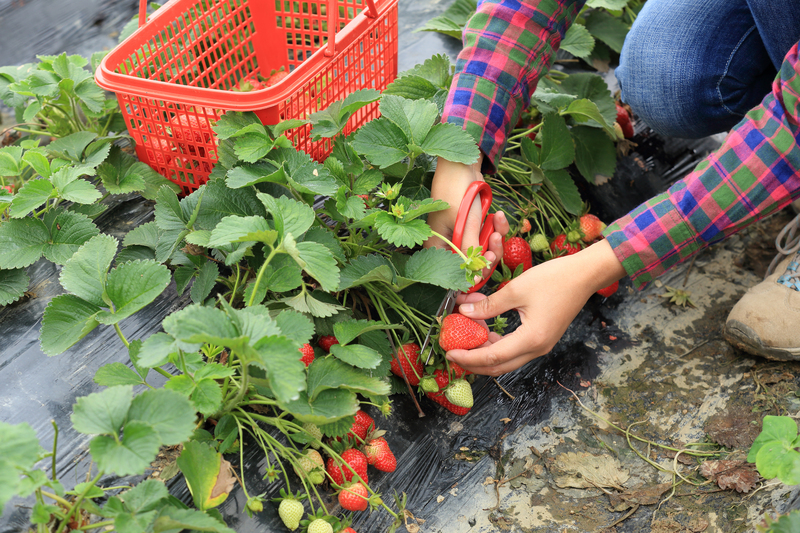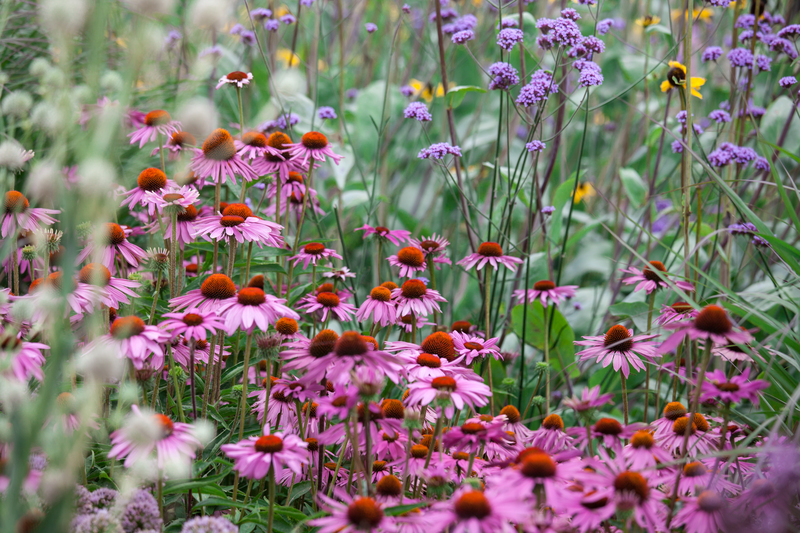Turning Around a Neglected Garden: Your Initial Steps
Posted on 03/09/2025
Turning Around a Neglected Garden: Your Initial Steps
Has your garden seen better days? If you're faced with weeds, overgrown shrubs, and tired soil, don't despair. Reviving a neglected garden is entirely possible and can be an incredibly rewarding process. Whether you've inherited a wild patch or let your own backyard become untamed, taking those initial steps is crucial to restoring your outdoor space's beauty and functionality. This comprehensive guide will provide you with step-by-step instructions to help you reclaim and transform your neglected garden.
Why Gardens Get Neglected
Life gets busy and gardens can easily slip down the list of priorities. Factors such as lack of time, knowledge, illness, or moving into a new property can all contribute to outdoor spaces falling into disrepair. Understanding the cause helps you to prevent the same issues recurring in the future.
- Busy lifestyles and changing schedules
- Lack of gardening experience
- Previous homeowners' neglect
- Major life changes (illness, bereavement, moving house)
Whatever the reason, know that restoring a neglected garden is achievable with patience and the right approach.

Your Essential First Steps to Reclaiming a Neglected Garden
Taking on a neglected outdoor area might feel overwhelming, but with a well-structured plan, you'll soon see progress. Here are the key stages you should follow to bring life back to your overgrown garden.
1. Assess the Situation: Survey Your Garden
Before you begin any work, take time to thoroughly observe your garden. Walk around with a notepad and consider these questions:
- Which parts are most overgrown?
- Are there any hidden treasures, such as mature trees or rare plants?
- What is the sunlight exposure in different areas?
- Is there any visible damage to fences, sheds, or patios?
- Are there signs of pests or disease?
Tips: Take photos during your assessment - they will help you track your progress and plan effectively.
2. Get Equipped: Essential Tools You'll Need
Having the right tools will make restoring your neglected garden much easier. At minimum, gather together:
- Sturdy gloves (to protect from thorns and debris)
- Secateurs or pruning shears
- Spade and fork
- Rake
- Hoe or hand trowel
- Wheelbarrow or large bags for waste
- Loppers or a pruning saw for thick branches
- Watering can or hose
If large trees or hazardous structures are involved, consider hiring a professional for safety.
3. Get Rid of Rubbish and Clutter
Clear all rubbish first. An untidy garden often accumulates all sorts of unwanted items: plant pots, broken furniture, children's toys, plastic, and sometimes hazardous materials. Systematically collect and sort everything as you go:
- Recyclables (plastics, metals)
- Garden waste (plant material, branches)
- General trash
- Hazardous waste (old chemicals or paint - dispose of properly)
Decluttering instantly makes your garden safer and gives you a clearer picture of what you need to tackle next.
4. Tame Overgrown Plant Life
Weeds and overgrowth are typical issues in forgotten gardens. Start by tackling the areas closest to your house or main pathways for the greatest visual impact. Here's what to do:
- Start with the largest plants: Prune back or remove overgrown shrubs and dead trees. Cut back brambles and ivy that might have overtaken fences or sheds.
- Remove weeds: Dig out perennial weeds and use a hoe for annual weeds. Try to remove roots to prevent regrowth. For very tough areas, covering them with black plastic sheets for several weeks can starve weeds of light.
- Rescue healthy plants: Look for existing plants that can be saved. Free them from weeds, dead leaves, and insect-ridden branches.
Tackle your neglected garden restoration in small sections. This avoids feeling overwhelmed and ensures each area gets proper attention.
5. Restore Lawns and Grass Areas
Sodden, patchy, or overgrown grass is a signature feature of abandoned gardens. Follow these steps to bring your lawn back to life:
- Cut the grass in stages: If your lawn is very long, mow on a higher setting first, then gradually reduce over a week or two.
- Rake out dead grass and moss: This allows light and air to reach new shoots. A spring-tined rake is great for this job.
- Reseed bare patches: Lightly fork the soil, scatter grass seed, and water well.
- Edge the lawn: Neaten up the borders for instant impact.
Sometimes, if the grass is beyond repair, it might be quicker to remove it and start anew with turf or seed.
6. Revitalize Your Soil
Nutrient-poor soil is a common issue in neglected gardens. Test your soil if possible (kits are available at garden centers), or simply dig and observe: is it dry, compacted, or sandy? Here's how to bring it back:
- Remove debris and stones.
- Dig in organic matter: Compost, well-rotted manure, or soil conditioner improve nutritional content and texture.
- Mulch bare areas: Mulching suppresses weeds, retains moisture, and boosts fertility as it breaks down.
Good soil is the foundation for a thriving garden. Don't skip this step; healthy earth will reward you with better plant growth going forward.
7. Prune, Shape, and Encourage Growth
Pruning encourages new growth and creates attractive shapes. Give shrubs and hedges some attention, removing:
- Dead or diseased branches
- Crossing stems that rub together
- Excess growth spoiling the plant's shape
Different plants prefer to be pruned at different times of year, so check the needs of each species if you can identify them.
Dealing with Neglected Vegetable Patches and Flowerbeds
If your derelict garden includes vegetable beds or flower borders, these will likely need extra attention. Here's how to bring them back from the brink:
- Remove all weeds and debris
- Turn over soil with a fork, breaking up large clods
- Mix in compost, well-rotted manure, or fertilizer
- Consider rotating your crops if you plan to grow vegetables
- Mark out new beds clearly for easy maintenance
Don't be disheartened if you need to leave some ground fallow for a season - focusing on soil improvement pays off in the long run.
Tackling Hard Landscaping and Garden Structures
In neglected gardens, patios, paths, sheds, and fences often need repairs. These can dramatically improve your garden's usability and appearance:
- Pressure wash patios and paths to remove moss and grime
- Check for secure and non-rotten fence panels or fixings
- Repair or repaint sheds and outbuildings
- Fix broken gates, steps, or handrails
Small changes make a big difference. Even a fresh coat of fence paint can make the garden feel loved again!
Starting to Replant and Redesign
Once your overgrown garden restoration is underway, you can start thinking about what you want your revitalized garden to become. Sketch a simple plan, marking areas for:
- Seating and relaxation
- Vegetables or herbs
- Flower beds or wildlife-friendly zones
- Paths and access points
Pick hardy, easy-care plants for your first year. Think about structure (shrubs, small trees), color (perennials, annuals), and all-important ground cover to keep weeds at bay.
Some Beginner-Friendly Plants to Consider:
- Lavender
- Salvia
- Hardy geraniums
- Roses (climbing or bush)
- Daffodils, tulips, and spring bulbs
- Herbs such as rosemary, thyme, or mint
Ongoing Maintenance: Protect Your Progress
With the initial garden clearance complete, your work isn't over. Regular maintenance tasks will keep your garden healthy and make future overhauls unnecessary. Build these routines into your schedule:
- Keep on top of weeding - little and often is best
- Prune and deadhead as needed
- Water young plants and grass during dry spells
- Mulch borders annually to suppress weeds and add nutrients
- Check for pests and diseases frequently
Consider creating an easy-maintenance border with mulch or ground cover plants if you're worried about falling behind in the future.
Encouraging Wildlife to Return
Restoring a neglected outdoor area is an ideal opportunity to boost its appeal for wildlife. Here are simple ways to make your garden a haven for birds, bees, and butterflies:
- Leave a small "wild" corner with native plants
- Install a bird feeder or bird bath
- Plant pollinator-friendly flowers (lavender, foxgloves, buddleia)
- Build a log pile or bug hotel for beneficial insects
Wildlife-friendly gardens are lower maintenance, beautiful, and environmentally beneficial.
When to Call in Professionals
Sometimes, reclaiming a neglected garden involves jobs best left to experts. You may need professional help if:
- Large trees need removal or heavy pruning
- There is evidence of Japanese knotweed or other invasive species
- You discover structural issues with patios, walls, or buildings
- Heavy-duty landscaping or machinery is needed
Investing in professional support for these complex tasks can save you time, money, and headaches in the long term.

Success Stories: Transforming Overgrown Spaces
Many beginners have turned abandoned gardens into stunning outdoor retreats. With patience, determination, and a step-by-step approach, you too can achieve a spectacular transformation.
"I inherited a garden waist-high in nettles and brambles. By tackling one small area at a time and composting everything I could, over two seasons I turned it into a cottage garden full of vegetables and wildflowers. It's now my favorite place to relax!" - Sarah, Kent
Document your own progress. Before and after photos provide a huge motivation boost and remind you how far you've come!
Summary: The Journey from Neglected to Nurtured
Reviving a neglected garden is a journey of discovery. Take it step by step:
- Assess the site and make a plan
- Clear all rubbish and clutter
- Tackle overgrown plants, restore the lawn, and improve soil
- Repair structures and replant with resilient species
- Maintain your progress with regular tasks
With patience, hard work, and the guidance from this article, your garden transformation will soon reward you with new blooms, abundant wildlife, and a peaceful retreat just outside your door. Begin your journey today and reclaim the beauty hidden beneath the weeds!



